Microsoft has a way to keep tabs on its users – by monitoring the activities that you perform on your devices. Windows 11 (as well as Windows 10) stores your data locally on the host computer (in case of a local account), or it is synced with your Microsoft account online if you have a Microsoft account linked to your OS for a better cross-device experience.
This feature is enabled by default and not many users are aware of it. For those who want to clear out their data, or simply check whether anyone has been using their PC behind their backs, this is the article for you. It discusses how you can check the recent activity history on your Windows 11 device and how you can enable or disable it.
Table of Contents
If you read Microsoft’s Activity History privacy statement, you will find that the “Activity History” feature in Windows 11 keeps track of almost everything that you do on your computer.
Activity history helps keep track of the things you do on your device, such as the apps and services you use, the files you open, and the websites you browse. Your activity history is created when using different apps and features such as Microsoft Edge Legacy, some Microsoft Store apps, and Microsoft 365 apps.
Microsoft
It further goes on to say that the information is used to gain a better cross-platform experience so users can continue what they were doing while switching between synchronized devices. However, not everyone would like Microsoft to use their data and would like to enhance their privacy so that no one has access to it.
The learnings of this blog are three-fold:
- How to enable/disable Activity History.
- How to clear Activity History.
- How to check if someone has been using your computer.
Enable or Disable Activity History in Windows 11
Whether you are using a local or a Microsoft account as your user account, you can choose whether you would like Windows to log your activity data or not by enabling or disabling the feature. Here is how to do it:
Learn how to convert a local account to a Microsoft account and vice versa.
- Navigate to the following:
Settings app >> Privacy & Security >> Activity History - Now uncheck the boxes next to “Store my activity history on this device” and “Send my activity history to Microsoft” to disable the Activity History feature in Windows 11. Or you can check with them to enable the feature.
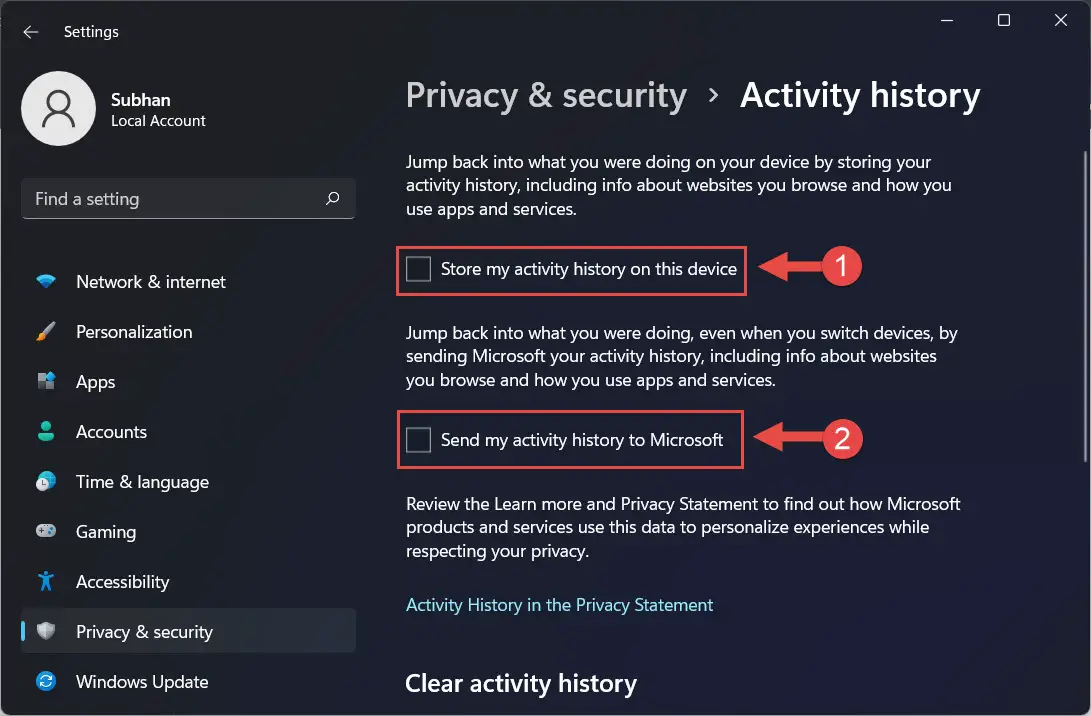
Checking the boxes will enable the feature. Activity History can be enabled or disabled at any given time. However, we would suggest that you disable the feature if you want to increase your privacy.
Clear Activity History in Windows 11
Even if you have disabled the Activity History feature in Windows 11, it will still store the data that has already been logged. Any stored data will then need to be manually removed if required.
Note that only the Activity History on the local device will be cleared if you are using a local user account. If you are using a Microsoft account, Activity History across all devices synced with that account will be deleted.
Note: Once deleted, the Activity History data cannot be recovered.
Here’s how to clear your Activity History from Windows 11:
- Navigate to the following:
Settings app >> Privacy & Security >> Activity History - Scroll down and click Clear below Clear activity history.

- On the confirmation popup, click Ok.
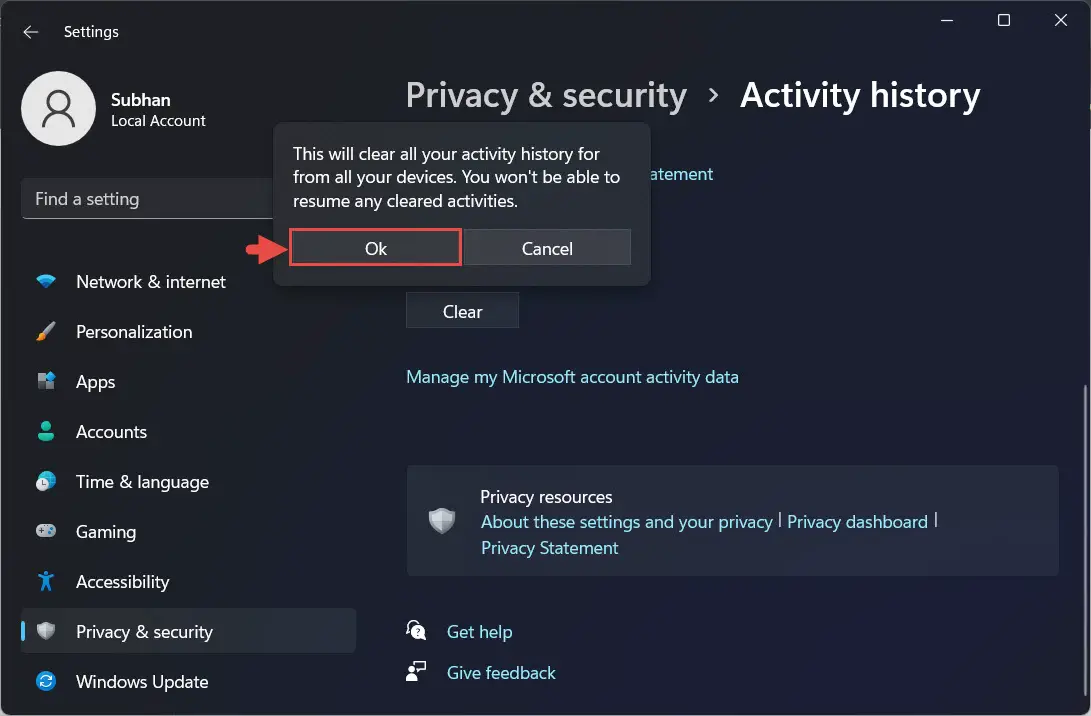
Any data collected through Activity History will now be removed permanently.
2 Ways to Check Recent Activity on Windows 11
This porting of the blog covers how you can check whether someone has been using your device without you knowing about it. There are 2 methods you can use: Through Windows Event viewer and the recently accessed documents.
Check Recent Activity through Event Viewer
Event viewer logs information about your system, which includes open apps, security protocols, application behavior, and much more. This can tell you more about what has been done on your device in the recent past.
To check the event logs through the event viewer on Windows 11, follow these steps:
- Launch the Event Viewer by typing in eventvwr.msc in Run.
- From the left tab, expand Windows logs and then click on any of the below categories of logs to explore them.
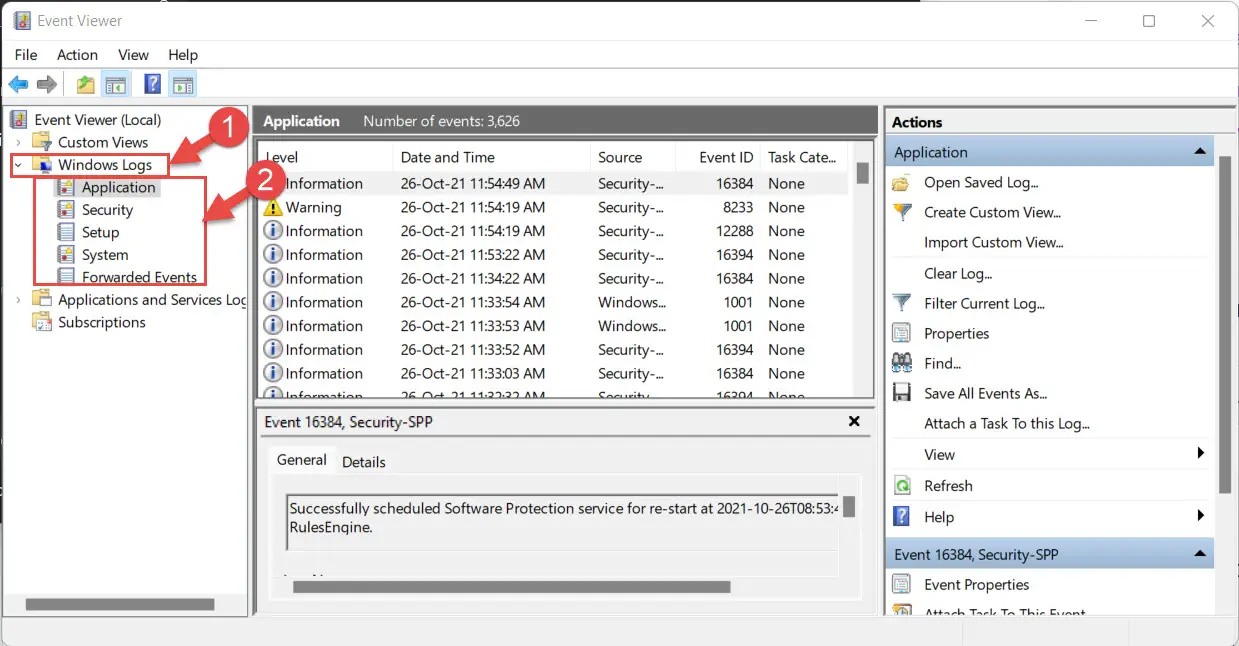
- You can now double-click on the events in the middle pane to explore them.
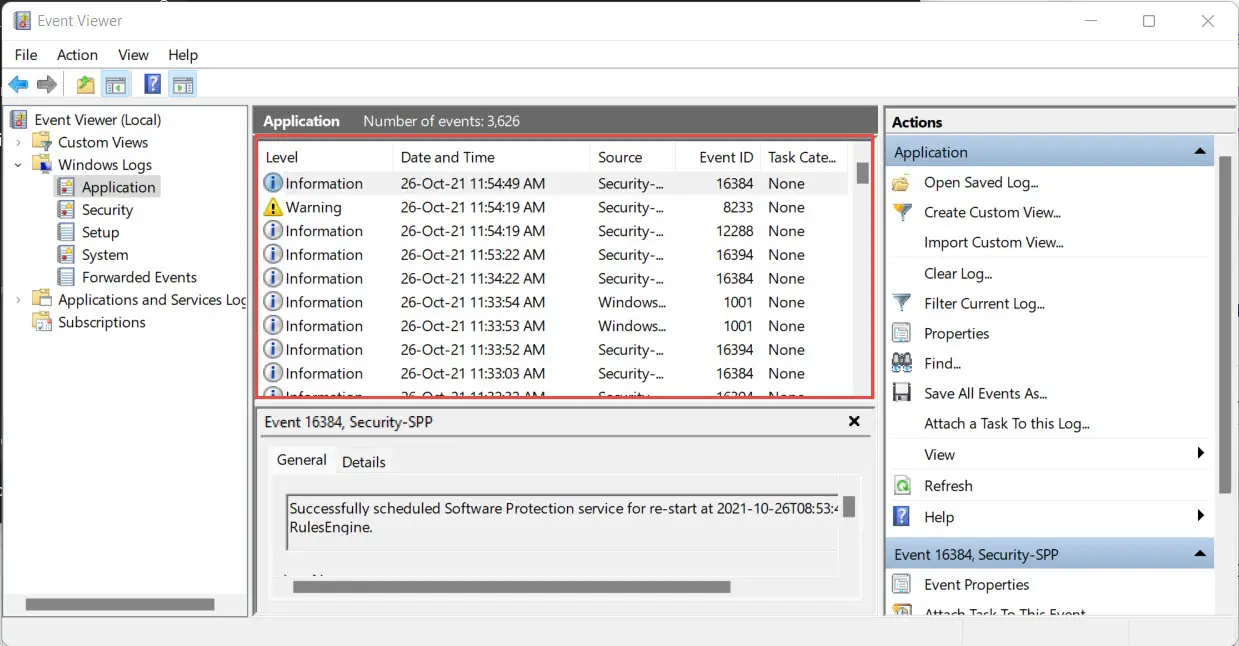
This way you can check if any activity has been performed on your device. You can also clear these logs by clicking on the Clear log in on the right pane, and then clicking Clear in the confirmation dialog box.
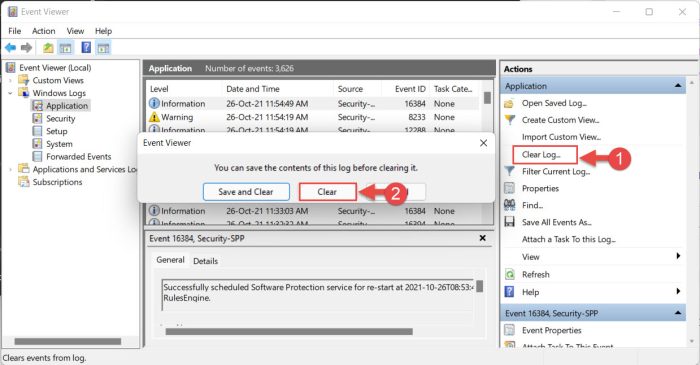
Check Recent Activity through Recent Items
Another quick way to check if your system has been in use is to check the recent items folder, which tells you what has been accessed as of recently, in descending order.
Open up the Recents folder by typing in shell:recent in Run and hit Enter.
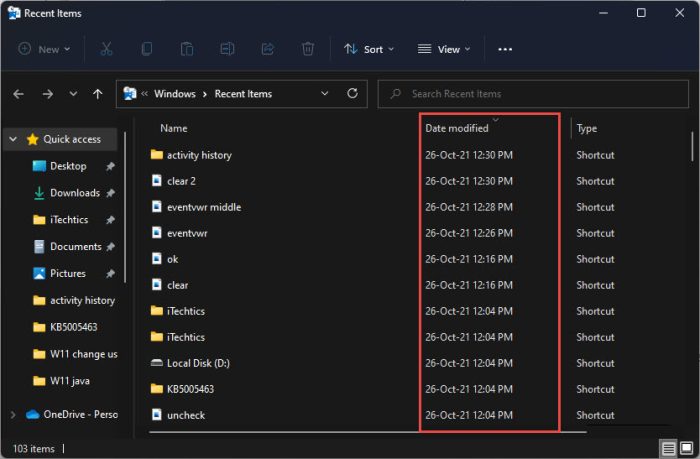
You can now tell by the item and their time of access whether your device was in use by someone else or not.
Manage Microsoft Account Privacy
If disabling and clearing your Activity History has not given you any peace, you can move a step further by controlling your Microsoft account’s privacy and micromanaging it.
Head to Microsoft’s Privacy Management page, log in with your Microsoft account and start managing your policies.

Closing words
The 21st century revolves around data accumulation. Every tech company wants to invest in data and then analyze it to target their marketing strategies and much more.
Microsoft says that the Activity History feature collects data as feedback to provide a better user experience. However, not everyone is comfortable sharing their routines and data with Microsoft. If you are one of those users, you can disable the feature entirely and make sure that it is not being collected again.
Once done, we would also suggest that you take a thorough look at your Microsoft account’s privacy and take full control of where you think is required.



